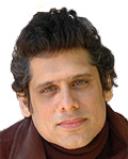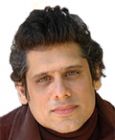Bias
Seven Key Cultural Dimensions of the Model Minority Myth
The Psychological Burdens of Being a Model Minority in America
Posted April 9, 2013
A Model Minority's Murderous Expression
In their book, The Myth of Model Minority: Asian Americans Facing Racism, Rosalind Chou and Joe Feagin (2008) write about a young Chinese American woman named R.W.-- who murdered her mother by strangling her. After the murder, R.W. covered her mother’s body and then made a call to the police. R.W was a school valedictorian, a talented musician and was studying at prestigious Ivy League university. The authors note that her crime received little attention from the press, but the incident deeply unsettled the Asian American community in which R.W and her parents lived. Chou and Feagin further write that R.W’s failure to complete her degree at the Ivy League school may have provoked her to commit suicide on several occasions and may have also compelled her to murder her mother.
Chou and Feagin (2008) write that R.W’s “demeanor was quiet, which likely suggested to white outsiders only a stereotyped Asian passivity. The white-created ‘successful model minority stereotype made it difficult for non-Asians around her to see her illness and encouraged silence among the Asian Americans who knew her (p. 1).” The authors further note that many Asian American immigrants view their acculturation within the United States through a strong “white racial frame” (Chou and Feagin, 2008, p.4). The white racial frame positions Asian Americans as high achievers, model minorities, with special aptitude for math, science, and engineering. They are considered a successful minority group because their attainments in the areas of education, income and occupation are considered on par with white Americans.
The Origins of the Model Minority Myth
The model minority myth was first created in the 1960s as a response to the introduction of the civil rights movement, and the larger demands from the African American and Mexican Americans to end discrimination and be treated as equal citizens. As a response to the demands, several politicians, and journalists conceived the model minority myth in order to “allege that all Americans of color could achieve the American dream—and not by protesting discrimination in the stores and streets as African Americans and Mexican Americans were doing, but by working as “hard and quietly” as Japanese and Chinese Americans supposedly did” (Chou and Feagin, 2008, p.12). The larger Asian-American diaspora adopted the assimilation model, conforming to the model of acculturation that did not interrogate the systemic racism on which the model is based. In my book, American Karma: Race, Culture, and Identity in the Indian Diaspora, I outline seven important cultural facets of the model minority myth.
1. The False Language of Meritocracy
First, model minorities believe that they are talented, spiritually grounded, work hard and have made it in America solely on their merit. The idea here is that through hard work and cultural values, model or “good” minority communities can rise above their difficult circumstances. Consequently, minority communities that may not have a plethora of success stories are simply seen as lazy, lacking in the right cultural values, not naturally bright, and enjoy being dependent on welfare. Many Asian-American immigrants, for example, in America neglect to acknowledge that back home they were part of an educated middle class and that they were cherry picked by the state to gain entry in the U.S. They then furthered their advantages by acquiring a world-class education subsidized by university scholarships. This largely “free” education then propelled them into a professional well-paying white collar jobs, along with other symbols of success such as fancy cars and palatial houses in exclusive suburbs.
2. The Unequal Starting Point of Model and “Unmodel” Minorities
Second, educated, professional Indian, Chinese, Japanese or Korean immigrants have a different economic and educational starting point than many other low-income, working class minorities in the U.S. It is simply unfair to compare the achievements of a small group of selective, elite professionals to the educational and economic attainments of other underrepresented minority groups who have been oppressed and marginalized for centuries.
3. The Deceptive Glorification of Cultural Values
Third, the model minority myth perpetuates the idea that many Asian Americans, irrespective of their individual aptitude and social class origins, have it in their cultural DNA to become highly accomplished doctors, engineers, mathematicians, scientists, and business executives. By stubbornly clinging to the model minority myth, what is not recognized by the larger Asian-America “middle class” diaspora is that there are thousands of other Asian-American immigrants in the U.S who are working as janitors, gas-station workers, taxi-cab drivers, motel maids, and as undocumented workers in restaurants.
4. Model Minorities and The Ivy-League Complex
Fourth, Asian-American immigrants who buy into the model minority myth tend to espouse a narrow notion of success and achievement and typically associate it with becoming doctors, engineers, lawyers, software engineers, and management professionals. This limited notion of success is then transmitted to their children who are pushed to compete for admission to brand-name Ivy League schools and expected to follow their parents’ “model” professions.
5. The Ambivalence of Racial Identity
Fifth, adopting the model minority myth also implies being silent about experiences of color, class, sexuality, race and racism. Many Asian-Americans are comfortable with the idea that they differ from mainstream America in terms of culture and ethnicity, but not in terms of their racial identity. Despite achieving tremendous economic success in the United States, the professionals, for example, from the Indian diaspora experience varying levels of racism and discrimination in their workplace and their suburban communities. The skin color, bindi, sari, food, gods and goddesses and “thick accents” of professional Indians invite racial attacks.
6. Universalizing Racism and Appealing to Human Nature
Sixth, the Indian migrants that I interviewed for my study spoke about their encounters with racism, but then deflected it by giving the following reasons: “every culture discriminates,” “look, Indians are racists as well,” and “it is human nature to marginalize others,” and “Europe is worse.” Following the model minority myth also involves shunning any attempt to form political alliances with other so-called “unmodel” minorities such as Blacks and Hispanics.
7. Model Minorities and the Problem of the Color Line and Colorblind Multiculturalism
Seventh, in 1900, the well-known African American scholar W. E. B. Du Bois noted that the problem of the twentieth century is the problem of the color line. Prashad (2001, p. 38) takes it further and observes that, “The problem of the twenty-first century, then, is the problem of the colorblind. This problem is simple: it believes that to redress racism, we need not to consider race in social practice, notably in the sphere of governmental action. The state, we are told, must be above race colorblind philosophy.” Many model minorities who are successful in America tend to adopt a colorblind view of mutliculturalism to explain their achievements. That is, these minorities typically advance the arguments that their individual effort, merit, hard work and intelligence determined their success and cultural factors such as race, class structures, social location, generational privileges have played a negligible role in attaining their American dream
References:
Bhatia, S. (2007). American Karma: Race, culture, and identity in the Indian Diaspora: New York, NY: New York University Press.
Chou, R.S. & Feagin, J. R. (2008). The myth of model minority: Asian Americans facing racism. Boulder, CO: Paradigm Publishers.
Prashad, V. (2001). Everybody was kung fu fighting: Afro-Asian connections and the myth of cultural purity. Boston: Beacon Press




